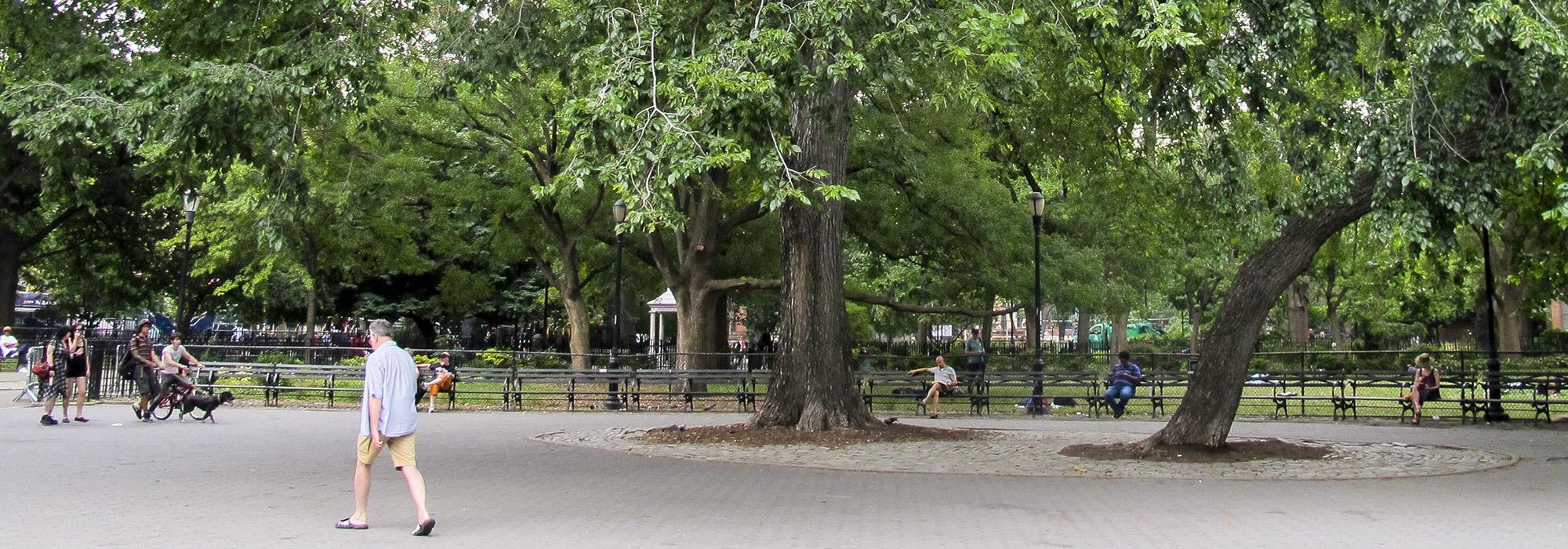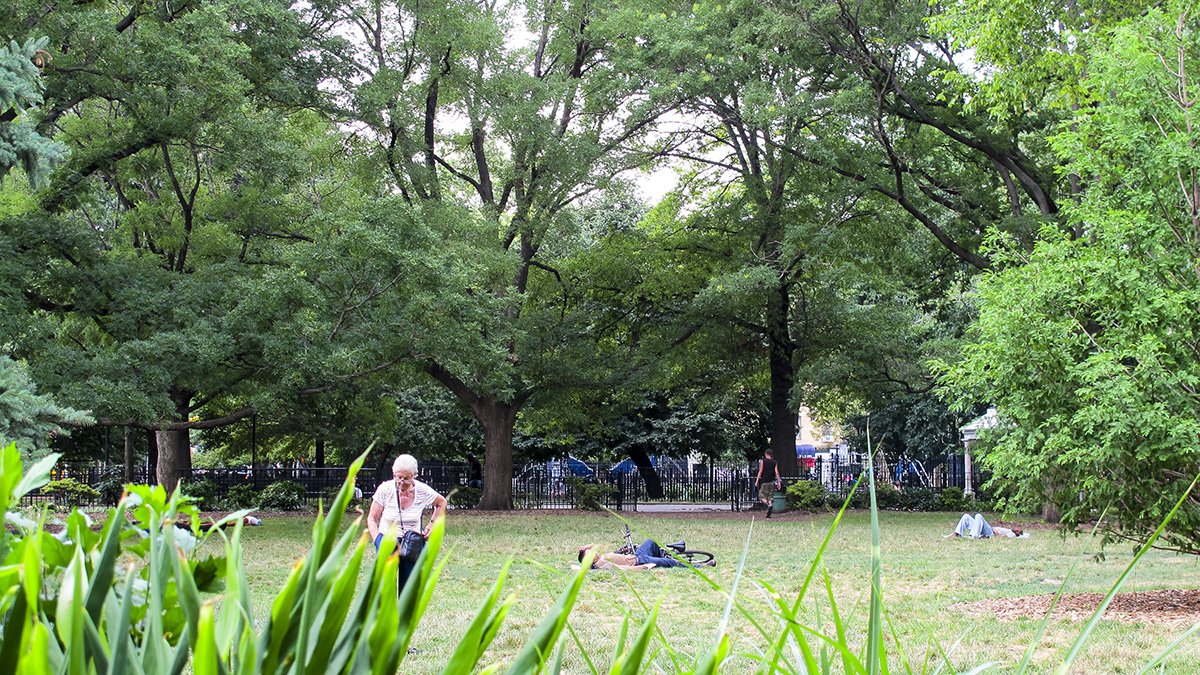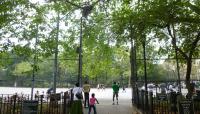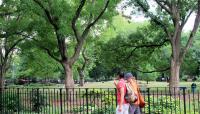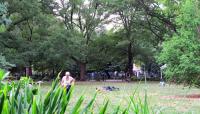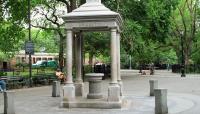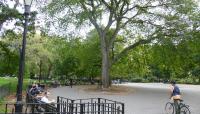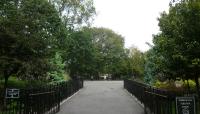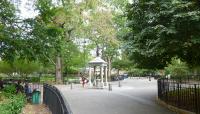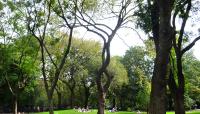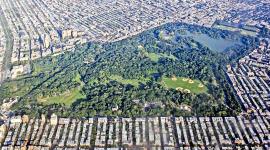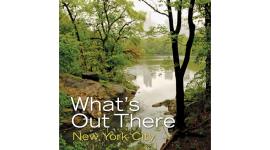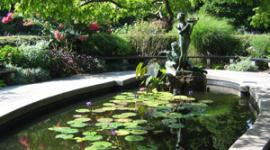Landscape Information
Originally envisioned by New York City planners as a market square, this 10.5-acre parcel was instead established as a public park, named after former New York Governor and U.S. Vice President Daniel Tompkins. Designed in the 1850s, it was virtually demolished when used as a drill ground in 1866; only three sycamore trees remain from this era. In 1878, it was returned to a neighborhood park, redesigned by Parks Department architect Julius Munckwitz with open lawn, shade trees and curving paths. A frequent location for political rallies, the park was also increasingly a focus of children’s recreation with one of the city’s first playgrounds. Robert Moses oversaw a 1936 renovation of the park, siting ball courts and other recreation across the north side of the park, separated by a road from the plantings and bench-lined paths. Debate about the park’s use continued, with the defeat of a city proposal to remove trees for a baseball diamond in 1957 and the subsequent construction of a concrete band shell in 1966, with support from the local community. The band shell became a focus for musical and activist gatherings of the East Village counterculture and a shelter for the city’s growing homeless population. Tensions over the park’s condition escalated, and in 1991 most of the park was closed for renovation, when the band shell was removed and iron fencing installed around planting areas. Today, Tompkins Square remains dense with activity, with six playgrounds, stands of elms and sycamores, and the city’s first dog run.



